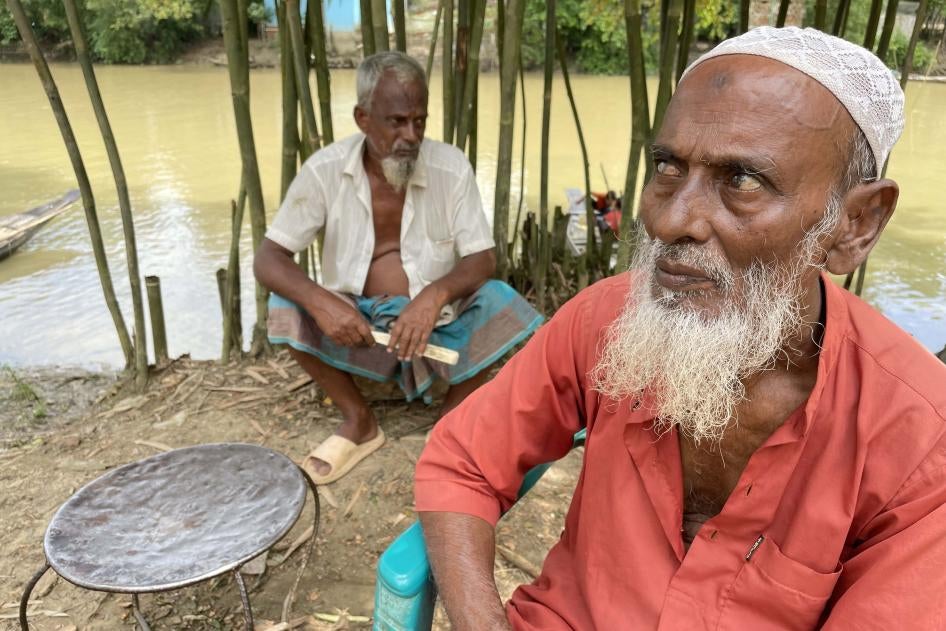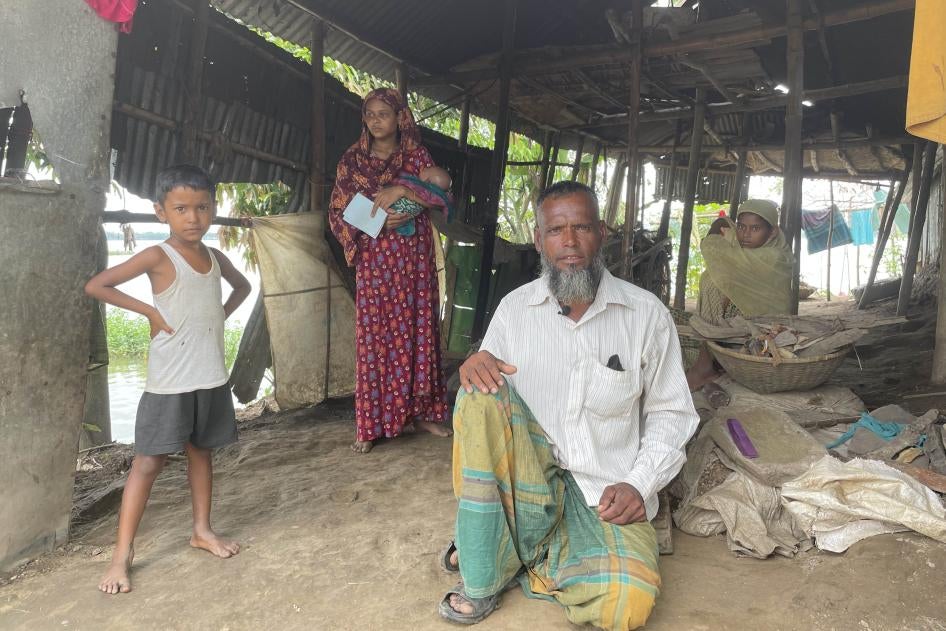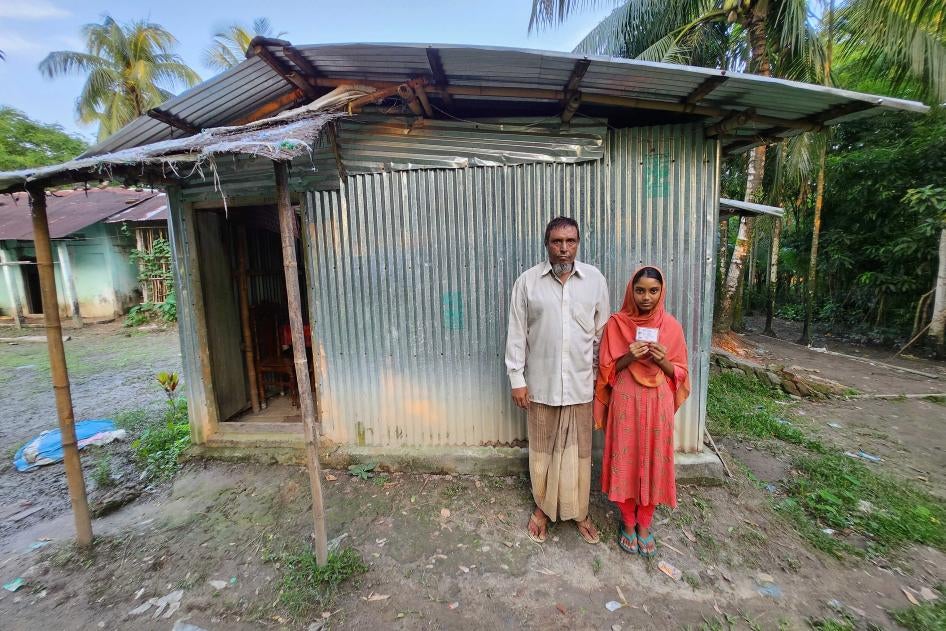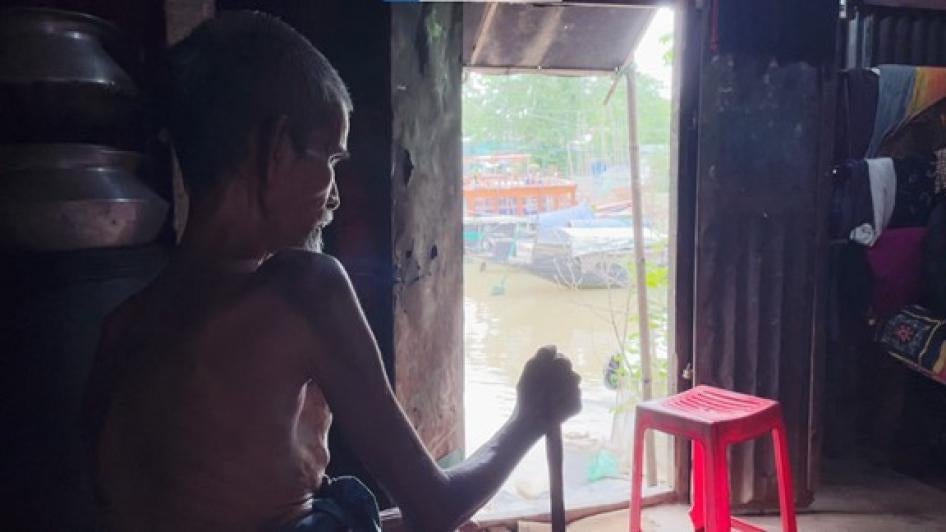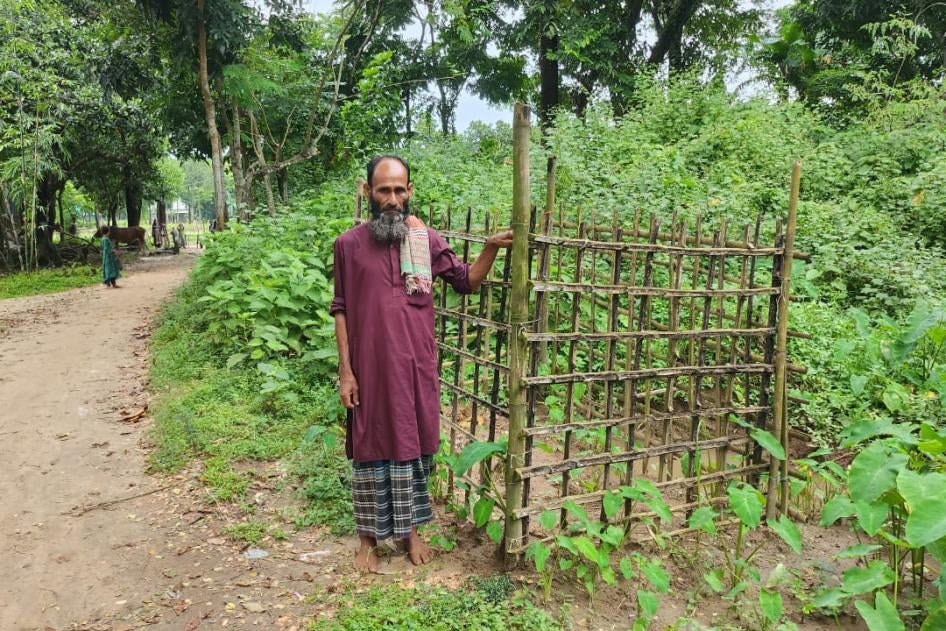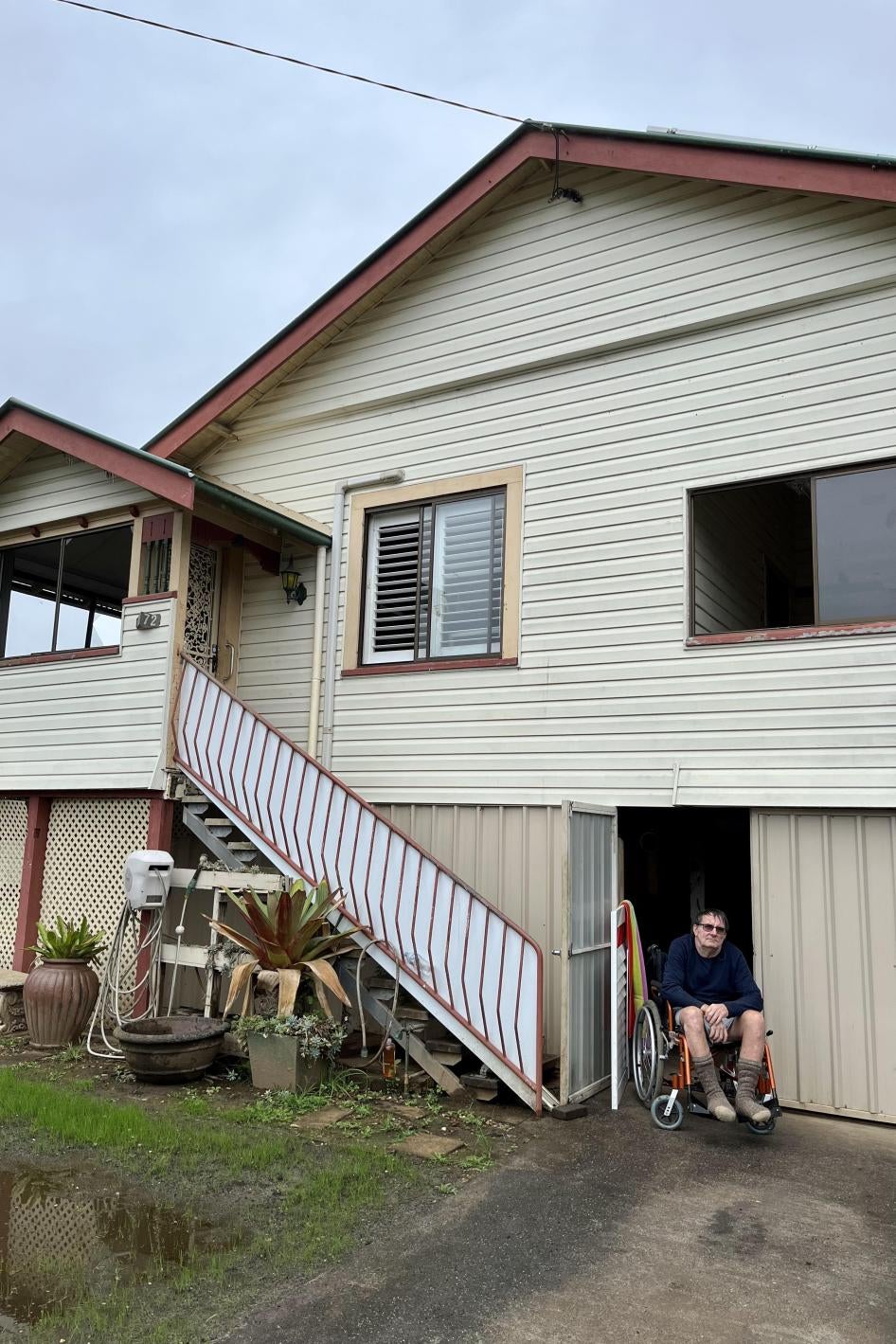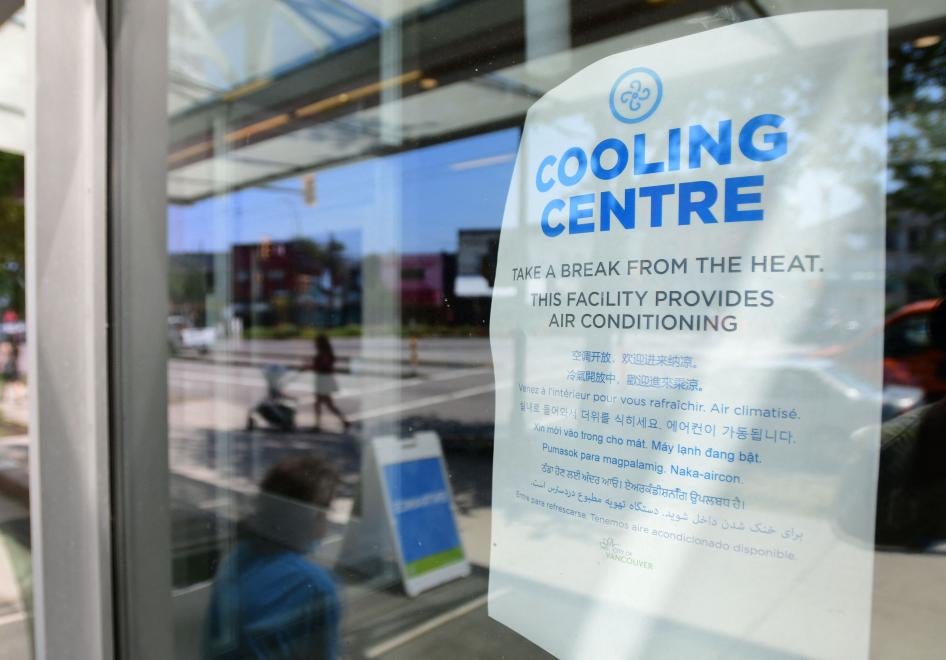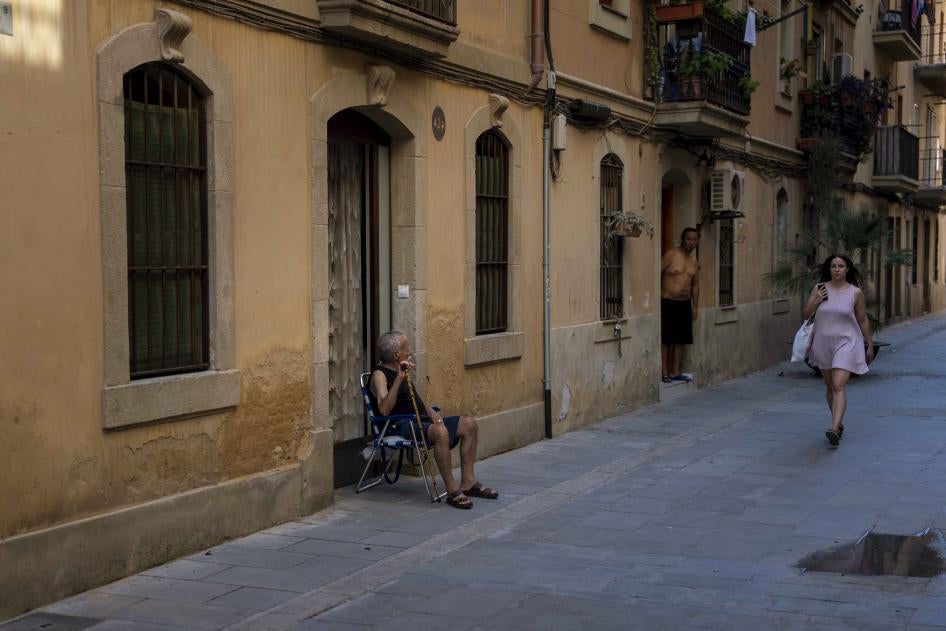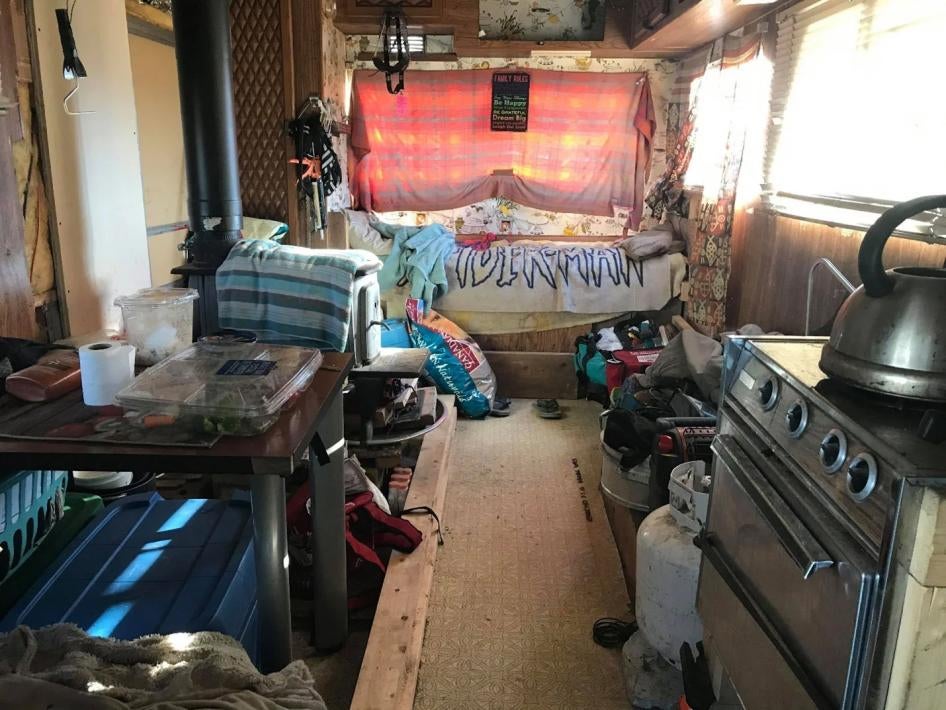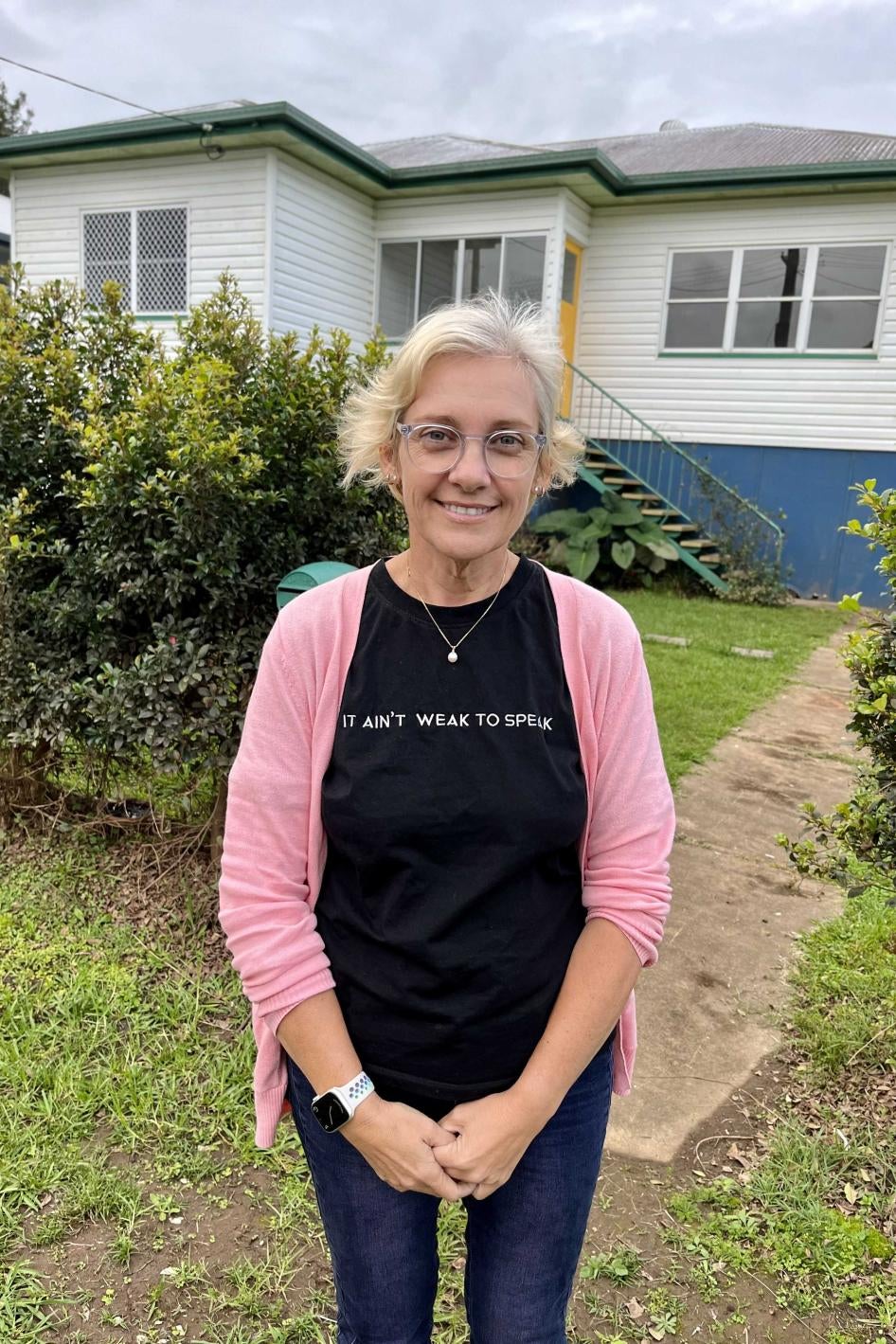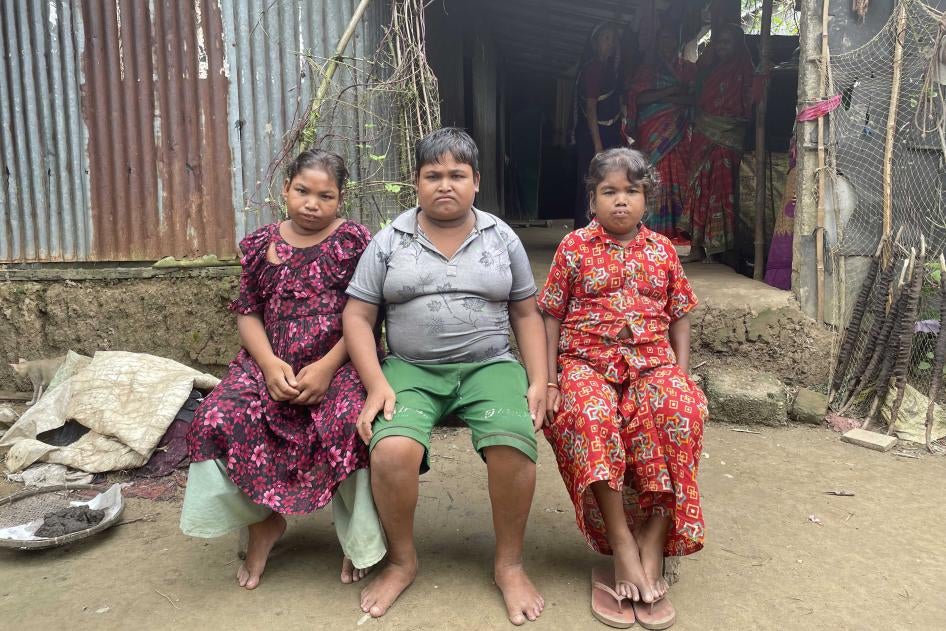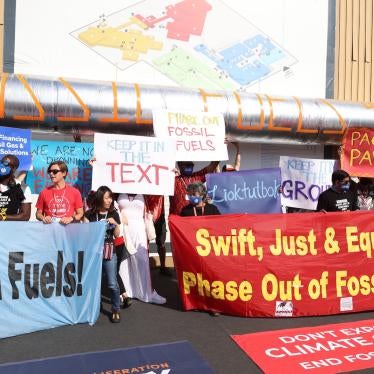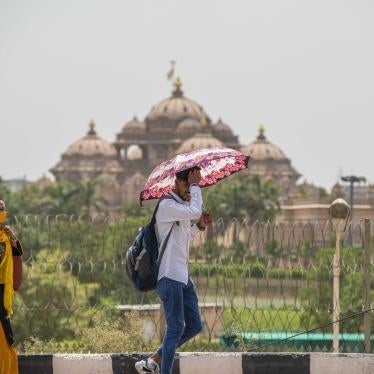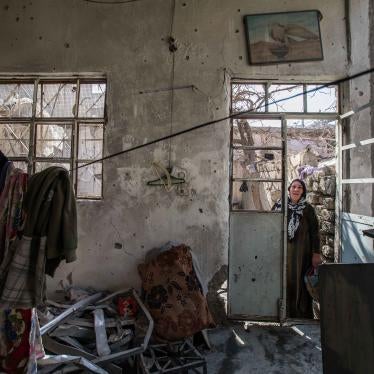SUMMARY
Extreme weather events, such as heatwaves, floods, wildfires, and other disasters, are projected to become more frequent and intense as a result of the climate crisis, taking a toll on lives and livelihoods around the world. While climate-related disasters affect everyone, they are especially detrimental to the health and wellbeing of people who are already at-risk and live in poverty and face marginalization, including people with disabilities, older people, Indigenous peoples, pregnant people, women, and children. In 2020 and 2021, the United Nations warned that people with disabilities and older people face unique challenges during climate-related disasters.
Between March 2021 and October 2022, Human Rights Watch interviewed more than 100 people, including people with disabilities, their families, disability and climate change activists and experts, representatives of humanitarian organizations, and others, as a component of our research on the situation of people with disabilities during climate-related disasters and extreme weather events.
Human Rights Watch research indicates that in situations of disasters and extreme weather events, people with disabilities and older people were at higher risk of death, as well as physical and mental health impacts, which were compounded by experiences of poverty and isolation. People with disabilities and older people faced greater issues accessing warnings and emergency information, as well as reaching humanitarian support in the aftermath. Many of those interviewed expressed fear about future climate-related disasters.
Human Rights Watch urges governments, the UN, and environmental groups to include and use the expertise of disability and older people’s rights advocates to jointly improve future preparations and support for extreme weather, ensuring that all have access, and no one is left behind.
INTRODUCTION: CHALLENGES FACED BY PEOPLE WITH DISABILITIES AND OLDER PEOPLE
Extreme weather events can take a heavy toll on our physical and mental health. People with disabilities and older people are at greater risk of experiencing adverse impacts of climate change and other extreme weather events due to social and economic factors, including higher levels of poverty, discrimination, stigma, ageism, or ableism. They are at higher risks of facing multiple and intersecting forms of violations of their human rights, including the right to life, health, food security, housing, water, and sanitation.
People with disabilities and older people are among those most disproportionately affected in an emergency and are more likely to die as a result. For example, people with psychosocial disabilities, or mental health conditions, have a two to three times higher risk of death from heat, in part because of the impact of certain medications on the body’s ability to regulate its temperature, but also because people living with a mental health condition might have limited access to coping mechanisms when facing high temperatures. Some people with physical disabilities are prone to experience greater pain and fatigue on hot days, and some people with spinal cord and traumatic brain injuries are at higher risk of heat-related illnesses because of their limited capacity to sweat, the body’s primary way of cooling down. They may also live in homes with insufficient heating and cooling systems to adapt to new temperature extremes. During floods, people with disabilities may require assistance and additional time to evacuate but receive less support and the existing warnings may not be accessible.
Older people are also at greater risk during extreme weather events. Some are more likely to have medical conditions that can make heat more dangerous, such as heart or respiratory conditions. Older people may also take medications that cause heat intolerance and impair the body’s response to heat, including the ability to thermoregulate. The staggering death rates of people with disabilities and older people during the 2021 heatwaves in British Columbia (BC), Canada, illustrates these points: 91 percent of those who died had a chronic medical condition or a disability and 90 percent were older people. During floods, older people may not be able to access health care and services. Older people also face ageism, discrimination on the basis of age, which aggravates impacts of climate change, for example being ignored in laws and policies related to climate adaptation. People living in institutions, such as nursing homes and institutions for people with disabilities, are particularly at risk. Due to the lack of data on disability and age, it is often unclear exactly how many people with disabilities and older people are affected by a particular disaster.
Governments have a human rights obligation to address climate change, including by reducing the greenhouse gas emissions that are driving it and by helping at-risk populations adapt to its impact. Under the Convention on the Rights of Persons with Disabilities, governments should ensure equal rights for people with disabilities, including older people with disabilities, as well as their protection and safety during extreme weather events. Under this treaty and the International Covenant on Economic, Social and Cultural Rights, everyone has the right to the highest attainable standard of physical and mental health. The International Covenant on Civil and Political Rights requires governments to protect the right to life, including from foreseeable threats such as climate change.
Organizations of People with Disabilities (OPDs) have repeatedly criticized governments for failing to protect people with disabilities from the climate crisis. A June 2022 report by the Disability Inclusive Climate Action Research Program at McGill University and the International Disability Alliance pointed out that most countries are falling far short of their human rights obligations to respect, protect, and fulfill the rights of people with disabilities in their responses to the climate crisis, including by failing to consider the rights of people with disabilities in their official climate plans.
This report describes some of the impacts of extreme weather events on people with disabilities and older people in the past two years by compiling previous research conducted by Human Rights Watch, primarily focusing on the 2021 heat dome in British Columbia, Canada; the 2021 floods in Germany; the 2022 floods in northeastern Bangladesh; the 2022 floods in New South Wales, Australia; and the 2022 heatwaves in some parts of Europe. In the spirit of “nothing about us without us”, a mantra of the global disability movement to ensure participation, this report shares accounts of people with disabilities, older people, or their family members and outlines recommendations for a more inclusive planning and response to extreme weather events that will likely become more frequent as a result of the climate crisis. Governments, UN agencies, humanitarian organizations, and climate change activists should take concrete steps to ensure the protection, safety, and dignity of people with disabilities and older people in extreme weather events, starting with ensuring their full inclusion in all climate change discussions and decision-making processes.
DISPROPORTIONATE DEATHS
People with disabilities and older people are at greater risk of dying in extreme weather events, including due to insufficient protection, for example a lack of evacuation, inclusive shelters, and assistance. In the case of people with disabilities and older people who have medical conditions for which they use medication or need ongoing medical care, extreme weather events and disruption of medical care can put them at higher risk of death and diseases.
FLOODINGS
In northeastern Bangladesh, flash flooding between May 17 and June 28, 2022, killed more than 100 people and severely affected over 7 million people. Thousands of people became homeless and had to move to shelters. While there is currently no conclusive evidence attributing the 2022 floods to the climate crisis, Bangladesh is one of the countries most vulnerable to climate change and the world’s leading scientific body on climate change, the Intergovernmental Panel on Climate Change (IPCC), predicts that the region will likely see more frequent and severe extreme weather events in the future.
Mohammad Montaz, who lives in Sunamganj, was among the 45 people, including people with disabilities, older people, and their family members, representatives of local organizations of people with disabilities (OPDs), and international humanitarian organizations Human Rights Watch interviewed in northeastern Bangladesh.
Mohammad said his 20-year-old daughter Taslima, who had multiple disabilities, died because of the flooding:
Taslima had stumbled into a hole while coming out of the flooded toilet…. She was drowning when we found her and had already swallowed a lot of the dirty water. I pulled her out, but she lost consciousness.
Mohammad approached a village doctor in Sunamganj who did not come to their house, but only prescribed some medicines. Although Taslima regained consciousness, the family could not find a boat to take her to a major hospital or money for further local treatment, and she died 10 days later.
The flooding in the town of Lismore in Australia’s New South Wales on February 28, 2022, killed at least four people and more than 2,000 homes became uninhabitable. While there is currently no conclusive evidence attributing the 2022 floods to the climate crisis, the most recent report of the IPCC projects an increase in more extreme rainfall events and flood magnitudes in eastern Australia due to warming temperatures.
Dave, who asked not to use their full name, a neighbor of 84- year-old Marge Graham, told Human Rights Watch that Marge died during the flooding, after being trapped in her home in south Lismore as the flood waters rose:
I could hear her screaming. That’s what really tires my mind out, she was only three houses down. I’m a really good swimmer, I have a bronze medallion, but the current was just too strong, it was rushing between our houses. I saw a cow and a horse get swept past. ... When it was still chest height, I could hear Marge screaming. By the time it was light, and it was up to the doors, I couldn’t hear her anymore. She had a walking frame; she couldn’t climb anywhere.
In Germany, at least 166 people died and many more went missing after severe flooding in July 2021. Twelve people with disabilities living in a group home drowned in floods in Sinzig, Germany, and prosecutors are investigating the circumstances, including the claim that authorities did not give any warning to residents to allow them to be evacuated. The IPCC confirmed that people living in coastal and river regions in Europe are at greater risk of flooding than before due to climate change.
HEATWAVES
Climate scientists have demonstrated that climate change has led to an increase of extreme temperatures in Canada, with changes in the number of warm nights and warm days. Studies across North America have demonstrated that high temperatures can lead to increased mortality and/or morbidity.
The province of British Columbia in Canada experienced an unprecedented extreme heat event in June 2021. This heat dome (a high-pressure weather system that traps heat) resulted in record temperatures in many parts of the province and lasted for several days. Overnight temperatures were uncharacteristically high. The BC Coroners Service, a government fact-finding agency, identified 619 heat-related deaths. Of those who died, 91 percent had a chronic medical condition or a disability, and 90 percent were over the age of 60.
Shortly after the heat dome ended, Human Rights Watch interviewed 13 people with disabilities, 7 older people, and 2 family members of older people to directly capture their experiences, and found that inadequate support from the Canadian federal and provincial governments compounded risks for people with disabilities and older people and possibly contributed to unnecessary suffering and deaths. In May 2022, the Canadian authorities published a report confirming that high indoor temperature was the primary cause of death, with most deaths occurring inside private residences. The report found that most of those who died lacked access to cooling and that the heatwave significantly impacted emergency medical services.
Heatwaves dominated much of Europe’s 2022 summer, breaking record temperatures and creating drought and wildfires. According to the IPCC, the frequency and intensity of hot extremes have increased in recent decades and are projected to keep increasing as a result of climate change. It also underlines that the climate crisis will increase the number of people at risk of heat stress and death in Europe. The risks are exacerbated by socioeconomic factors. Thousands of people died in July 2022 as 21 countries in Europe endured unusually high temperatures during an unprecedented and prolonged yet predictable heatwave. Older people and those with underlying medical conditions, such as respiratory and cardiovascular conditions, were particularly affected.
Available data shows the disproportionate impact of heatwaves on older people. Data from Spain and Portugal shows that most people who died in the 2022 heatwave were over the age of 65. In the United Kingdom, 90 percent of heat-related deaths in 2021 were among people 65 years and older. Similarly, when France had its deadliest heatwave in 2003, most of the 15,000 people who died were older people. Human Rights Watch is not aware of any published data on how many of the older people who died had a disability or data on the impacts on other people with disabilities.
IMPACTS ON PHYSICAL HEALTH
Extreme weather events can disproportionately impact the physical health of people with disabilities and older people. Studies have shown that heat can exacerbate respiratory illness and increase the risk of complications. Some existing conditions and medication may impact the body’s ability to regulate temperature. Social factors, such as limited income and lack of access to warnings and information on how to stay safe, exacerbate the risks. Lack of access to medical care during extreme weather events and in the aftermath can put people’s lives and health at higher risk, especially older people and people with disabilities who need ongoing medical care. People with hearing, visual, intellectual, or cognitive disabilities may be at higher risk of water-related and other diseases following flooding because the existing information is not accessible.
After the floods in northeastern Bangladesh, many people described being cut off from access to medical support. In Sunamganj, Sultana Begum, 45, narrated to Human Rights Watch how the flood affected her mother Nurunnesa, 65, who has a physical disability:
Seeing the water enter the house, we climbed on to the bed. But the bed collapsed into the water due to the currents. We were shouting for help and crying. We spent the whole night in chest deep water. Then one of our neighbors rescued us and took us by boat to the main road…. By the time we were rescued, my mother was in bad shape. We tried desperately to keep her warm so that she would live…. It was a nightmare.
Nurunnesa obtained basic treatment from a local village doctor, but ever since her ordeal in the cold water, she has lost the use of her right hand and has experienced difficulties walking.
In Canada, people with disabilities and older people interviewed by Human Rights Watch in 2021 described symptoms of heat exhaustion and heat-related illnesses during the heat dome. They recounted fevers, headaches, dizziness, nausea, confusion, swollen legs, weakness, breathing difficulties, and losing consciousness.
“Ember,” 69, has a physical disability and asthma and lives in a subsidized housing unit in South Surrey, British Columbia. She said the temperature in her apartment reached 39˚C during the heat dome and that she developed a cough and a persistent fever afterward. “I have never been so sick in my entire life,” she said. “I have had fevers and colds, but not this dizziness, not the shakiness. I couldn’t do anything. I nearly fell off the toilet seat because I was so dizzy.” Ember eventually went to a hospital on June 30, 2021, where she received intravenous fluids for dehydration and antibiotics, and was prescribed oral antibiotics for one week.
IMPACTS ON MENTAL HEALTH
Climate change can also significantly impact the mental health of older people and people with disabilities. Existing marginalization, lack of social connectedness, poverty, lack of advanced and accessible warnings, protection and assistance, feelings of exclusions, fear of how to survive future extreme weather impacts, and survival guilt all contribute to higher distress among people with disabilities and older people. At the same time, mental health and psychosocial services may not be inclusive of their rights and needs or people may not have access to psychosocial services at all.
Mosaddek, 23, who has multiple disabilities, including speech difficulties, lives with his parents, brother, and sister in a thatched hut, a vulnerable home construction, in Amtoil Village, Biswanath Upazilla. His father, Abdul Ali, shared Mosaddek’s experience during the 2022 flood:
The current was so high, it was impossible to live inside our house. My younger son and I carried Mosaddek through the water to his maternal grandfather’s house, which was not flooded. My son with a disability was so terrified of the water that he was shouting “Allahu, Allahu,” which can be translated to “God, God” and is the only word he can say.
In Australia, South Lismore resident Amanda Speers, who has a hearing disability, was home alone on the night of the flood in February 2022. As water began to rise over her shoulders, and Amanda feared for her life, she told Human Rights Watch:
I had hit total panic mode…. I rang my parents and said, “Basically, I'm going to die, and I love you.” And they were trying to talk to me, I said, “I can't even hear what you're saying to me.” I think that's when I surrendered to the fact that I was going to die. And it was a matter of whether I died in my house or I died outside my house trying to escape.
When Human Rights Watch investigated the heatwaves in British Columbia, Canada in 2021, people with disabilities and older people said they are coping with trauma, anxiety, agitation, and depression because of past heatwaves and with the uncertainty about how they will survive future ones. People with pre-existing mental health conditions told Human Rights Watch in 2021 that the heat dome exacerbated their symptoms, and six of them even mentioned they feared for their life.
“Anita,” 24, who has post-traumatic stress (PTSD), an attention “deficit” and hyperactivity condition (ADHD), and fibromyalgia, and lives in Burnaby, said the heat made her feel irritable and sluggish: “The longer the day went on the more anxious I felt.” Lack of sleep due to the heat made her PTSD worse:
I woke up a lot, which made my disability symptoms worse. I also have bad nightmares from my PTSD, and the nightmares were worse during the heatwave, mostly from climate change anxiety. It made me feel helpless for my future, as things are projected to get worse.
The people with disabilities and older people we interviewed in Canada all expressed general mistrust of the government’s ability to respond to their needs during heat emergencies. Existing fear and anxiety about seeking assistance due to past negative experiences with the health and social care systems also prevented people with disabilities from seeking help. Gabrielle Peters, a disabled policy analyst who lives in poverty in a subsidized apartment in Vancouver, BC, said:
I am afraid that I will be in this situation where I am in trouble and I won’t be able to access help, where an ambulance will be hours away and I have no idea when it’s coming. I saw what happened during the heatwave, I read about people calling for help, and your relative dies in front of you because the ambulance doesn’t arrive. Can you imagine being that person?
Edward McArthur, who has multiple disabilities and is unhoused, drove for 12 hours from Golden to Esquimalt, BC, to escape the heat, only to be told by the police to leave:
I was in fear of my life…. I had to leave the area because we could not find shelter or cooling or remedy. It left me in [a] state of emotional anxiety and fear, and I had to drive 12 hours through forest fires to the coast, only to find … no services available for homeless or disabled people.
POVERTY AND ISOLATION
Extreme weather events can exacerbate poverty and social isolation that people with disabilities and older people already face. At the same time, economic and social status play a huge role in the ability of people to adapt to climate change and stay safe during extreme weather events.
In Bangladesh, most of the people with disabilities Human Rights Watch interviewed lived in poverty and inadequate living conditions even before the floods. Hasena Begum, 25, has a physical disability and lives in a home with a family of 7. Three of her siblings also have disabilities. Before the floods, she used to beg for money at the bazaar to provide for her family. Her older brother, Parul Miah, who had a disability, died during the floods after previously becoming sick. During the floods, the family was unable to obtain sufficient medical treatment for Parul. Hasena’s mother, Anowara Begum, told Human Rights Watch that, due to the flooding, Hasena was unable to beg for money at the bazaar, impacting their ability to afford basic necessities, which meant the family had to take a high interest loan. Anowara said:
During the flood, we did get some food aid from the government while at the shelter and from some individual neighbors after returning to the house as everyone knows I have five children with disabilities, and I do not have my husband. But the help was not enough to manage a big family. To survive, I have already taken some loans on high interest from my neighbors … to support my family.
In Canada, the BC Centre for Disease Control reported that “most deaths occurred in the community in private residences, and the areas of risk had … less green space, more people living alone, and lower income levels.”
Most people included in the Human Rights Watch 2021 Canada research lived alone, in poverty, and did not have a reliable support system or anyone checking on them in case of an emergency. They all lived in small unit apartments which made it harder for people to deal with the extreme heat. All but one said they had minimal ventilation and inadequate green space or shade around their buildings. In some cases, small window sizes, or a complete lack of windows that fully open, contributed to insufficient airflow or prevented the easy installation of an air conditioner. Most told Human Rights Watch they could not afford to buy or operate cooling devices.
The correlation between income levels and deaths is particularly relevant in British Columbia, where, according to 2018 data, older people are 45 percent more likely to live in poverty compared to those in the rest of Canada. Single older people who live alone in BC experience even higher rates of poverty than older people in general.
Aphrodite Janeway, a 35-year-old trans-woman with disabilities, said she was only able to purchase an air conditioner because of federal Covid relief money. Even splitting the cost among herself, her partner, and a roommate, they struggled to pay the electricity bill. Ember captured the challenges of surviving a heatwave for people in poverty: “Money is scarce for anything so luxurious as a proper fan or, heaven forbid, an air conditioner.”
RECOMMENDATIONS
Governments, UN agencies, humanitarian organizations, representatives of observer organizations and NGOs working on climate change and activists should take the following steps to ensure the protection, security, and dignity of persons with disabilities and older people in situations of risk, including extreme weather events.
To Governments:
- Ensure that people with disabilities and older people, particularly those with lived experience of extreme weather events, are included in all climate change discussions, including mitigation, adaptation, and preparedness planning.
- Develop systems to inform and support people with disabilities and older people to adapt to climate change impacts and extreme weather events, in consultation with these groups.
- Ensure access to timely and appropriate health care for people with disabilities and older people, including during extreme weather events.
- Ensure that emergency messaging methods and emergency preparedness and response programs are inclusive of and accessible to everyone and developed in consultations with people with all types of disability.
- Ensure that information on climate mitigation and adaptation is available in different formats that are accessible to people with different disabilities and older people.
- Collect data on the full scope of extreme weather events, and disaggregate this data by age, disability, ethnicity, and gender, among other relevant categories.
- Comply with existing commitments on climate finance—i.e., financing that seeks to support mitigation and adaptation actions to address climate change—and consider the rights of people with disabilities and older people in funding.
- Rapidly reduce emissions, stop subsidizing fossil fuels, and end all new fossil fuel projects to prevent the most catastrophic climate outcomes and to protect the rights of at-risk populations along socio-economic lines.
To the United Nations, including the United Nations Framework Convention on Climate Change (UNFCCC) Secretariat:
- Ensure the meaningful participation and involvement of people with disabilities and older people in climate change negotiations and discussions on an equal basis with others.
- Establish platforms for meaningful participation at the UNFCCC secretariat to enable people with disabilities and older people to further engage with UNFCCC processes, including by sharing their valuable knowledge in the fight against climate change and its impacts.
To Humanitarian Organizations and Disaster Risk Reduction Groups:
- Ensure inclusive design, planning, targeted funding, and outreach to people with disabilities and older people.
To Observer Organizations and Other NGOs working on Climate Change and Activists:
- Ensure the meaningful participation of people with disabilities and older people in all global and regional discussions about extreme weather events, climate change-related emergencies, and adaptation plans.

